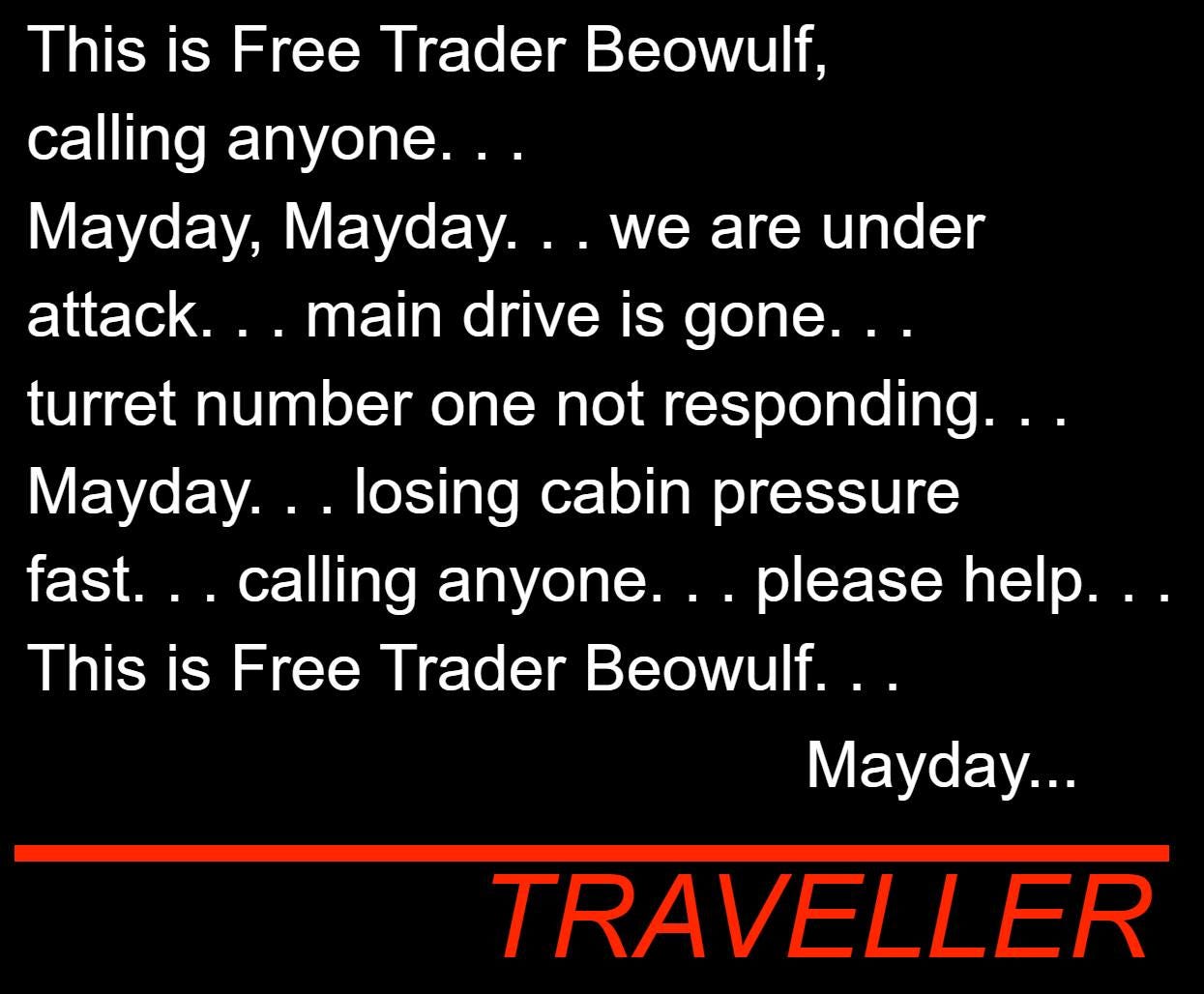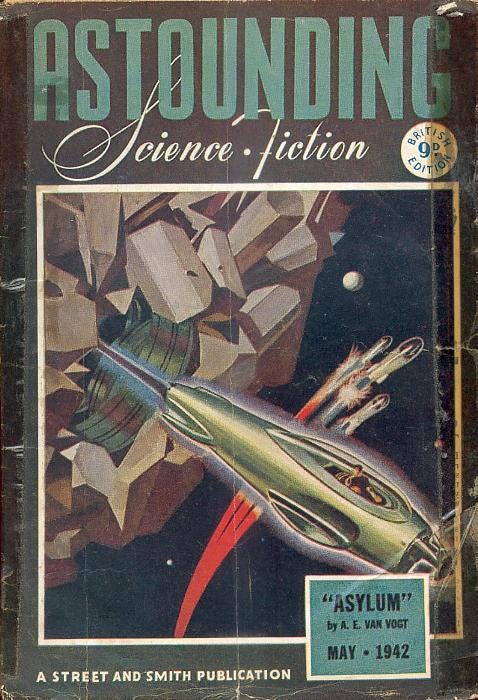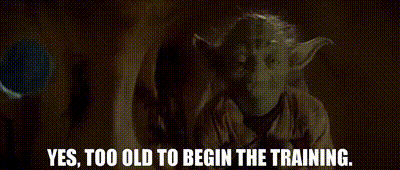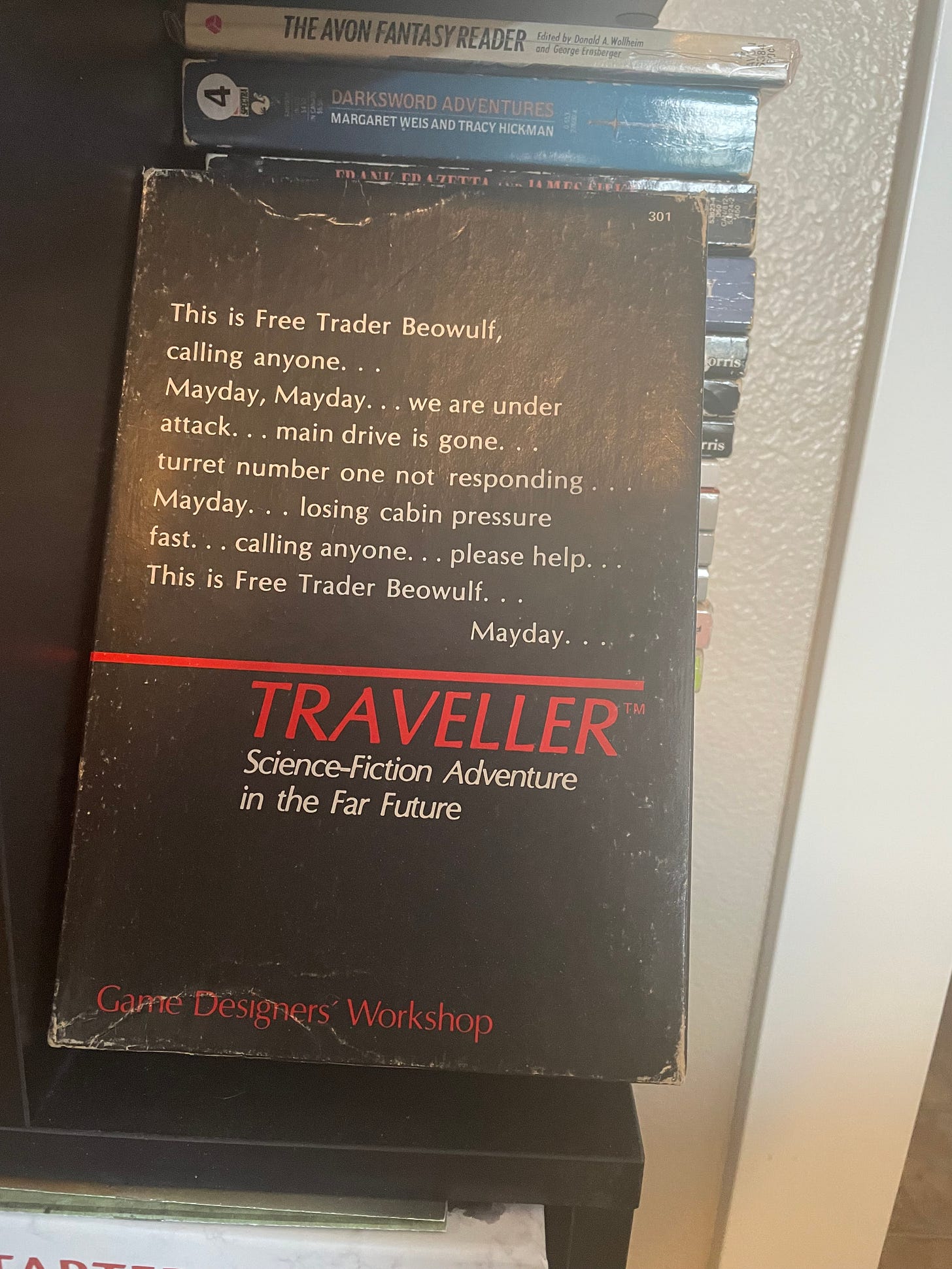Happy Mayday! Time to Check Out a Great SF Roleplaying Game
For Fans of Traveller May 1st has Special Significance.
May 1st of every year holds a special place in the hearts of fans of the Traveller roleplaying game. This isn’t because it is the anniversary of the publication of the game, instead it’s because of the hook that inspired people to try the game at all. That hook is the brief message on the cover of the box that held the original Little Black Books.
That short box cover message contains a lot of information about the Traveller setting, all without going into any expository. There is enough content in that distress call alone to run a detailed and rich science fiction campaign.
Fans of Asimov’s Foundation stories instantly recognize from this message that Traveller is a science fiction role playing game. The references to “Free Trader” and “losing cabin pressure” echo the “The Traders” like Master Trader Eskel Gorov from Asimov’s stories.
Even for those who haven’t read Asimov’s tales, there is a lot of content to be mined. First, we know this is a science fiction setting where “free traders” exist. What this exactly means, if you aren’t an Asimov fan, may not be clear but it is a jumping point. There are people who do trade between worlds. What is also clear is that this is a dangerous job. We know this not because the crew of the Beowulf are losing cabin pressure and might perish, though that makes it clear enough. Instead, we know it because this free trader has more than one turret mounted on the space craft and they are under attack. Is it by pirates? Is it by an interplanetary navy? We don’t know. We do know that the trader does think it is possible that someone who can help them might be within radio distance. Why else would they be broadcasting. We also know that this isn’t necessarily likely, because they are asking for “anyone” to help them.
That’s a lot of information and fuel for the imagination in one small blurb and that’s how Traveller, especially in the Little Black Books, rolls.
Traveller was initially published in 1977, making it the third science fiction roleplaying game. The first was James Ward’s Metamorphosis Alpha which combined science fiction “ark salvation” stories with post-apocalyptic sensibilities. The second was Ken St. Andre’s Starfaring that is a thematic mashup of Ralph Bakshi’s counter cultural animation, the underground comics of the late 60s and early 70s, and John Carpenter’s Dark Star making it very much a game of its time. I’m excluding Ken St. Andre’s Rollerball. Though it was published in February of 1977, it was printed as a limited edition zine and not a full blown entry into the rpg marketplace.
Both Metamorphosis Alpha and Starfaring were published before the release of Star Wars, and neither had a setting or rules set that was a good fit for the film franchise. Traveller wasn’t a perfect fit either, but it was close enough for it to become the go to system for those who wanted to play something approximating Star Wars.
While the original Little Black Books, now available in a single volume facsimile edition at a very reasonable price, didn’t have a full blown setting, the implied one was painted in broad enough strokes that Star Wars fans adopting seems a natural fit.
The abandoned Free Trader Beowulf may as well be the Millennium Falcon for those more versed in Star Wars than Foundation, or even those equally so. Once you crack open the Little Black Books, there are even more parallels.
There is a some form of Galactic Empire, a fact that is only implied in the original rules which are very open ended, but made explicit later. It’s implied by the sheer volume of military career choices provided in the lifepath character generation system, a system in which your character can die prior to even being able to be played. Military service, or being a scout in outer space, is very dangerous business. The lifepath system is a hallmark of the game and very influential to later roleplaying games.
There is also “The Psionics Institute” which can train certain characters to use various mental powers (read as Jedi Powers) and that Institute is viewed with suspicion by the masses. Additionally, psionic potential diminishes as you age if you didn’t receive training at a young enough age. It’s important to note that the scope of psionics in Traveller isn’t exactly Star Wars-esque. Certain powers like teleportation can grow to extraordinary levels, while telekinesis will never get as powerful as Yoda in Empire Strikes Back.
There is the typical array of science fiction weapons like blasters etc., but more importantly characters might actually learn the “Blade” skill during character creation and swords in the equipment section. This alone makes it seem a perfect fit, even if the rules don’t include “laser” or “lightning” swords.
So, not a perfect fit, but if you are willing to do a little game design on your own and craft house rules, then it’s a good proxy in a time before there were other systems.
I could go on and on about Traveller, and a topic worthy of investigation is its lack of exponential character power growth that you see in other roleplaying games, but I’ll just finish by saying you should do yourself a favor and buy a copy. Oh, and you can make a couple of characters before hand to see if any die during character creation even before you buy the books.
This post was inspired by
's recent Sci-Fi issue newsletter. Check it out!What are you doing between MayDay and May the Fourth Be With You?







